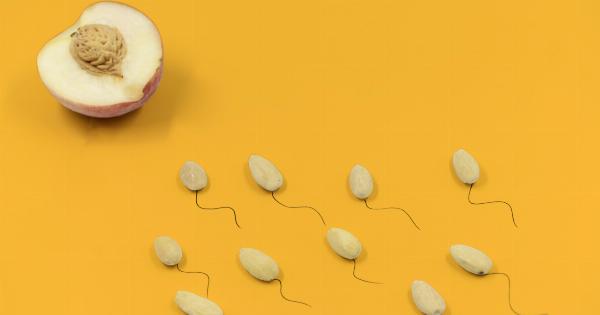When it comes to fertility and planning for a family, the quality of sperm plays a crucial role. Good sperm quality is essential for successful fertilization and conception.
While there are several factors that can influence sperm health, certain indicators can help assess the overall quality. Understanding these indicators can help men make informed decisions about their reproductive health. In this article, we will explore the indicators of good sperm quality and their significance in male fertility.
Sperm Count
One of the primary indicators of good sperm quality is the sperm count. Sperm count refers to the total number of sperm present in a given semen sample.
A healthy sperm count is typically considered to be around 15 million sperm per milliliter (ml) or higher. A low sperm count, known as oligospermia, can reduce the chances of conception and may indicate an underlying fertility issue.
Sperm Motility
Sperm motility refers to the ability of sperm to swim and move effectively. Good sperm motility is crucial for sperm to reach and penetrate the egg for fertilization.
High motility is typically characterized by the forward movement of at least 40% of the sperm. Impaired sperm motility, known as asthenospermia, can hinder the fertilization process.
Sperm Morphology
Sperm morphology refers to the shape and structure of sperm. Ideally, sperm should have a regular oval head, a midsection, and a long tail. Poor sperm morphology, known as teratospermia, can affect sperm’s ability to fertilize an egg.
Abnormal sperm morphology may indicate genetic abnormalities or underlying health conditions.
Sperm Volume
Sperm volume refers to the amount of semen a man ejaculates during ejaculation. While the exact volume can vary, a healthy sperm volume is usually between 1.5 and 6 milliliters.
Insufficient semen volume, known as hypospermia, may reduce the chances of successful conception as it can limit the number of sperm available for fertilization.
Sperm Vitality
Sperm vitality refers to the percentage of live sperm in a semen sample. Vital sperm have a higher chance of successfully fertilizing an egg compared to non-vital or dead sperm. A healthy sperm sample should ideally contain at least 58% live sperm.
Low sperm vitality, known as necrospermia, can significantly impact male fertility.
PH Level of Semen
The pH level of semen plays a vital role in maintaining sperm health. The ideal pH for semen is slightly alkaline, ranging between 7.2 and 8.0. Imbalances in pH levels can affect sperm motility and overall sperm quality.
Acidic pH levels can reduce sperm lifespan and hinder fertilization.
White Blood Cell Count
The presence of white blood cells (WBCs) in semen can be an indicator of infection or inflammation in the reproductive system. Elevated levels of WBCs, known as leukocytospermia, can have a negative impact on sperm health and fertility.
Monitoring the white blood cell count is essential in assessing sperm quality.
Hormone Levels
Hormonal imbalance can affect sperm production and quality. Testosterone levels play a critical role in maintaining sperm production and sexual function.
Hormonal imbalances, such as low testosterone levels, can lead to reduced sperm production and impaired fertility.
Oxidative Stress Levels
Oxidative stress occurs when there is an imbalance between free radicals and antioxidants in the body. High levels of oxidative stress can damage sperm DNA and impair sperm function.
Measuring oxidative stress levels can provide insights into overall sperm health and fertility potential.
Lifestyle Factors
Several lifestyle factors can influence sperm quality. Smoking, excessive alcohol consumption, drug use, poor diet, obesity, and sedentary lifestyle can all negatively impact sperm health.
Adopting a healthy lifestyle, including regular exercise, a balanced diet, and avoiding harmful habits, can improve sperm quality.
Conclusion
Assessing sperm quality based on various indicators is crucial for understanding male fertility potential.
A combination of factors such as sperm count, motility, morphology, volume, vitality, pH levels, white blood cell count, hormone levels, oxidative stress levels, and lifestyle choices contribute to overall sperm quality. Maintaining a healthy lifestyle, seeking medical advice when necessary, and addressing any underlying issues can help improve sperm quality and increase the chances of successful conception.





























